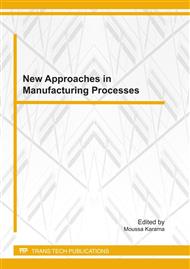p.77
p.85
p.95
p.107
p.117
p.125
p.135
p.147
p.155
Mechanical Resistance Improvement of Oxidized Metallic Hollow Spheres Stacking
Abstract:
The oxidation of stainless steel hollow spheres stacking has been studied at 800, 900 and 1,000°C in laboratory air in the range of 200h. The experimental results based on the relative weight gain of oxidized samples revealed an effect of the sphere’s size over the kinetic of oxidation: the quicker oxidation of the material constitued by smallest spheres suggests that the ratio of exposed surface is preponderant in the oxidation mechanisms. A quasi total transformation of the metal into oxides has been observed after 100h at 1000°C. Some simple quasi-static compression tests highlighted a significant deterioration in mechanical resistance for samples oxidized for 100h at 900 and 1,000°C. The global collapse of the oxidized samples could be imputed to the presence of oxides into the shells porosities by implying a decrease of their ductility. In order to improve the mechanical resistance of oxidized hollow spheres stacking, the adding of a dense metallic undercoat is proposed. The concept is tested by producing small samples of nickel-based hollow spheres stacking. The observation of oxidized samples shows that the shell of hollow spheres are not totally oxidized, providing a continuous metallic squeletton beneficial for mechanical stiffness at high temperatures.
Info:
Periodical:
Pages:
117-123
Citation:
Online since:
June 2011
Authors:
Price:
Сopyright:
© 2011 Trans Tech Publications Ltd. All Rights Reserved
Share:
Citation:


